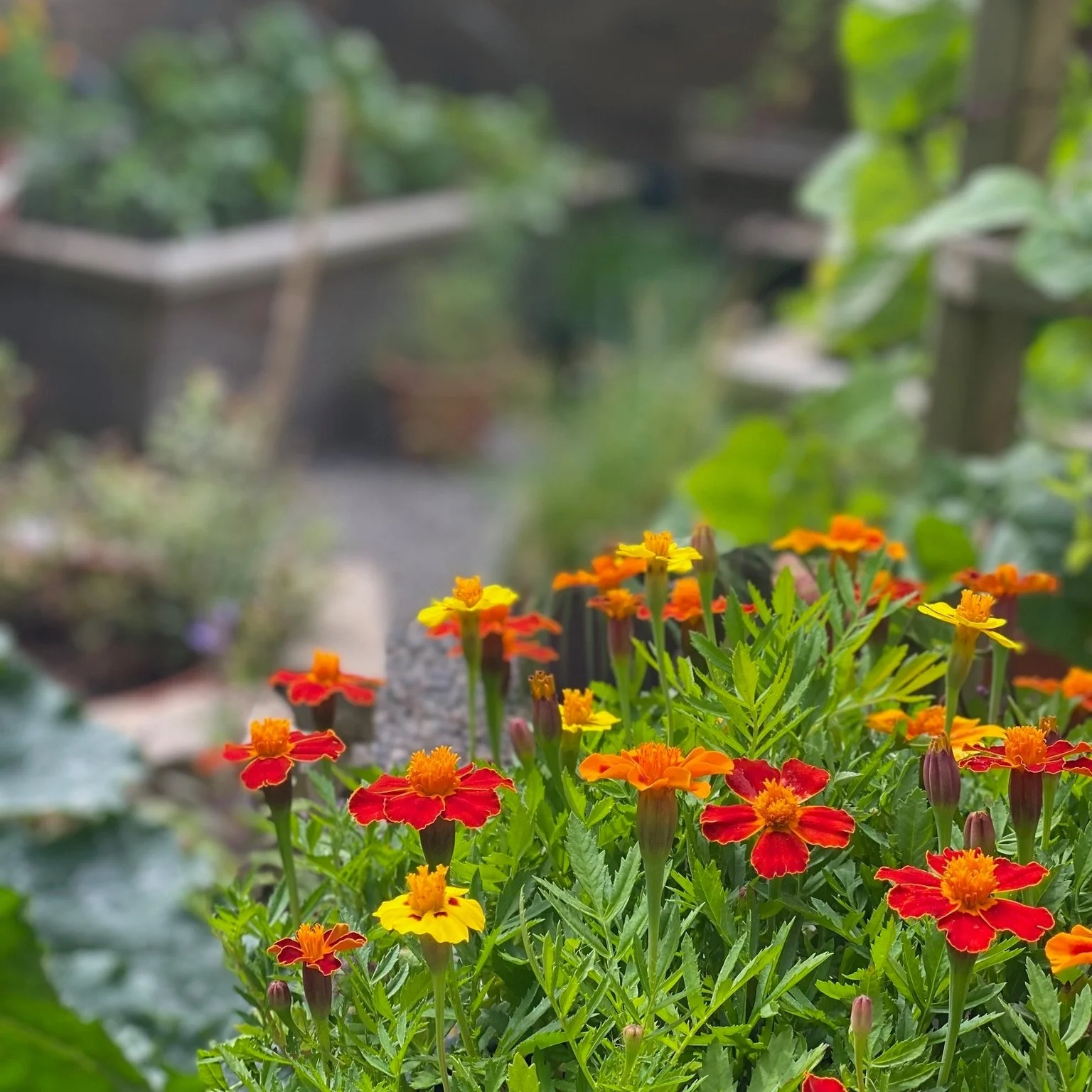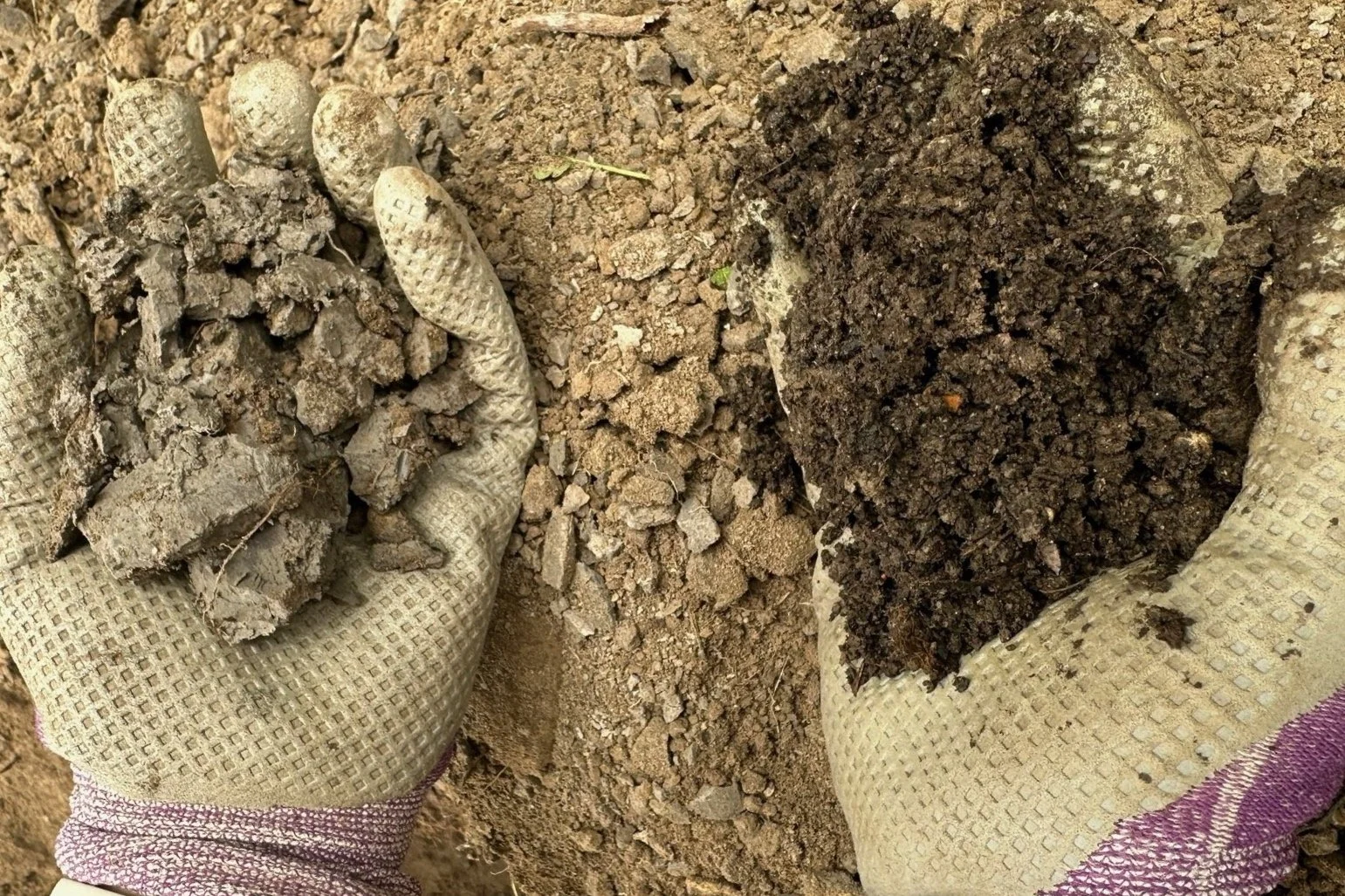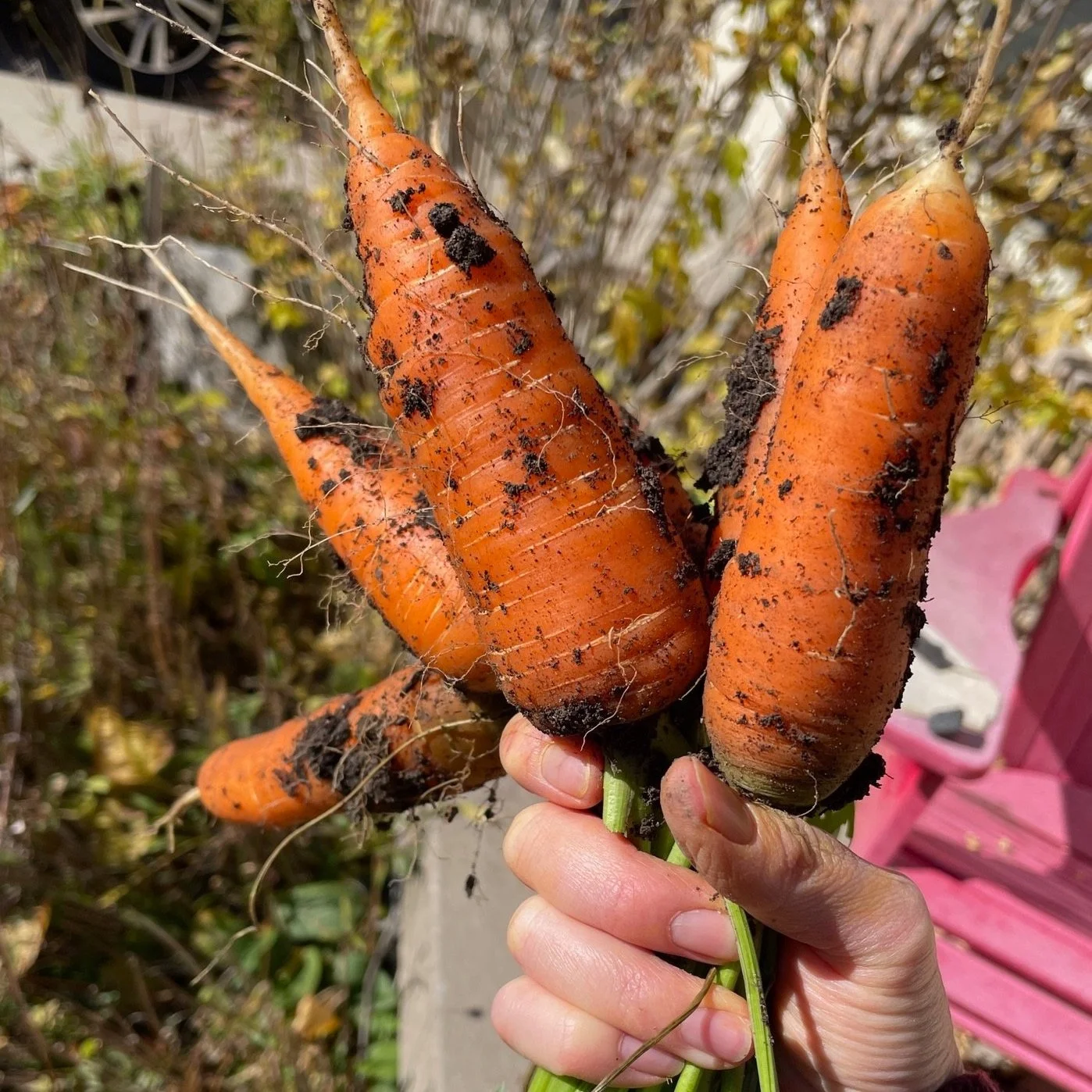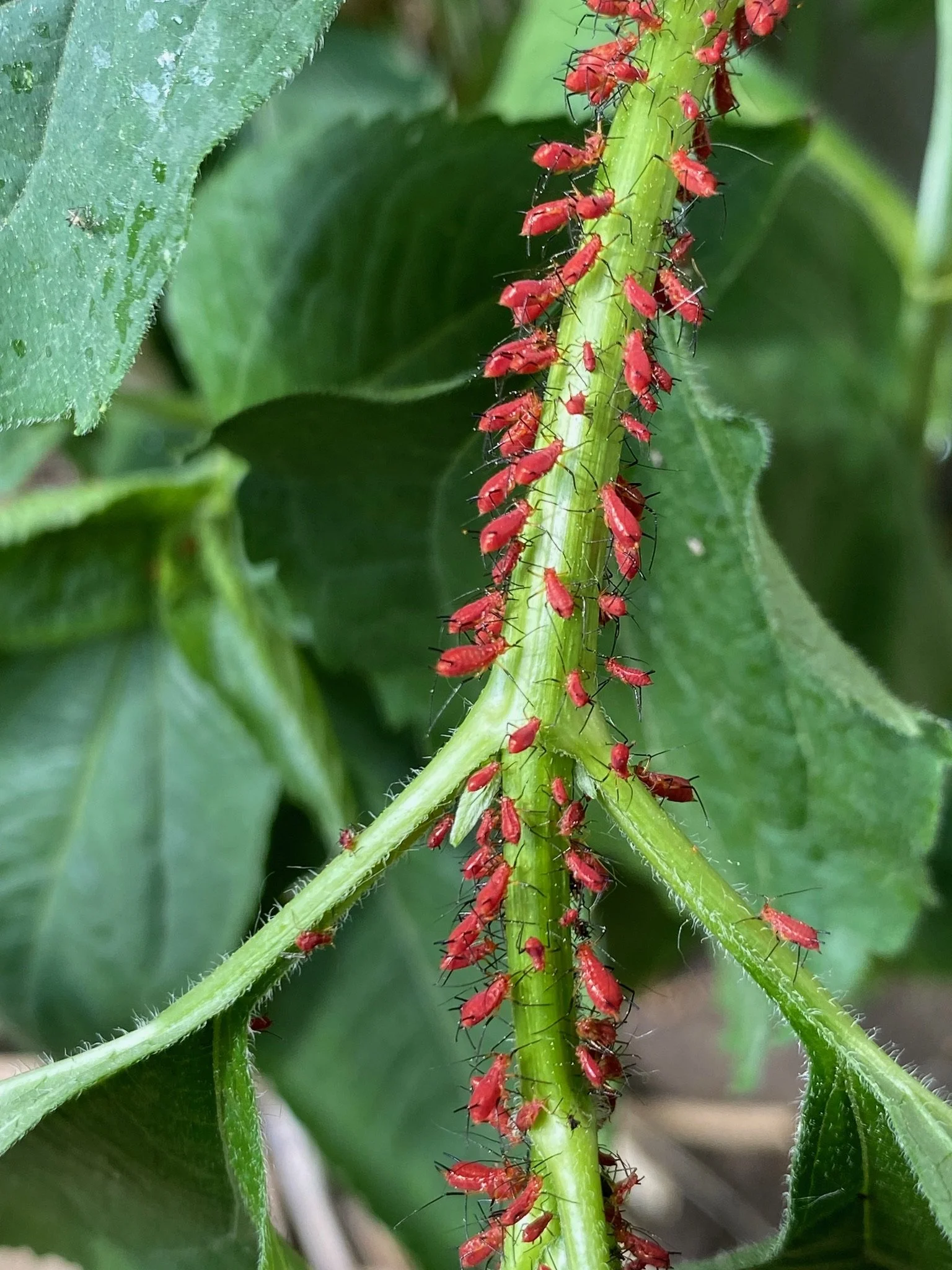Pest Control and Prevention
Pest Prevention
Prevention is always the best way to control pests in your garden. We are very much against the use of pesticides and herbicides because of the detrimental effect to the environment. We have found some alternatives that work for us and hopefully they will help you too:
Companion Planting:
Companion planting will not only make your garden more colourful and attract pollinators, but it can also help deter some pests while attracting beneficial insects. Planting beneficial insects preferred food source will help attract them to your garden. If you successfully companion plant in your vegetable garden you will create an environment that allows for the Beneficial Insects to rid of your pest problems.
Some plants have a strong scent that pests might avoid, planting these close to your vegetables will help protect them. For example, marigolds can deter nematodes, and basil can repel aphids.
We go into more detail about companion planting here What is Companion Planting?
Healthy Soil:
Healthy soil will support stronger plants. If your soil is nutrient rich and full of beneficial microorganisms, your plants will be able to take up more nutrients and the microorganisms prevent some soil borne pests. We go into more detail about the importance of soil health here Soil Health.
Crop Rotation:
Crop rotation is the practice of growing different crop types in a garden bed each season. You should avoid planting the same type of crop each year as this can deplete the nutrient content and lead to weak plants. If you rotate your crops each season you will also interrupt pest life cycles that target specific crops, this will reduce infestations. If you are interested in reading more about crop rotation have a look here Vegetable Bed Rotation.
Crop Protection:
A highly effective method for preventing pests from damaging your plants is the use of physical barriers. One approach we rely on consistently is garden netting, which we place over crops that require protection. This technique helps shield the plants from common garden pests that might otherwise cause harm.
It is important to ensure the netting allows enough space for plant growth and development. Make sure to remove the netting from any plants that depend on pollinators in order to produce fruit once they start to flower.
Certain garden pests are only active during specific times of the year. For example, carrot flies are typically present from late spring through early fall, with peak activity occurring from late May to early June and again from late July to early August. While carrots do not require protection throughout the entire season, it is important to protect them during these high-risk periods.
We've found it really helpful to keep track of the pests we spot in our garden. By having notes to look back on next season, we can take proactive steps to better manage their populations.
Plants to Protect:
These plants are often aggressively attacked by common garden pests in our area of Southern Ontario. We always make sure to cover and protect these crops as soon as they are planted out. It only takes one caterpillar or one egg underneath your protection to ruin your plants. This is why it is very important to cover them as soon as they are planted.
Carrots
Kale
Broccoli
Lettuce
Cabbage
Brussels Sprouts
Turnips
Common Garden Pests:
What are you protecting your garden from? Read more about common garden pests here.
Here are some of the most common pests you might find eating away at your plants:
Cucumber Beetle
Tomato Hornworm
Cabbageworm
Aphids
Squash Borer
Slugs and Snails
Japanese Beetle
Whiteflies
Mice and Voles
Pest Control
Keep a close eye on your garden and watch for any early signs of pests or disease. Catching problems early is often the key to stopping them before they get out of hand. If left unchecked, pests can multiply rapidly, making them much harder to control later on.
Integrated Pest Management (IPM):
IPM is a very popular approach for controlling pests in an environmentally friendly way. IPM can fall under both “prevention” and “control” because the practices used will do both. Prevention is always the best form of pest management. Here are some IPM methods often used:
Preventative Measures: Protect your plants by using a physical barrier. Make sure your soil is healthy which will keep plants less stress and prone to pests. Properly dispose of infected plant material so pests wont stick around in the garden.
Monitoring and identification: Regularly check for signs of pests. Correctly identify which pests you have so you are able to use the appropriate solutions. In greenhouses, sticky traps are often used for monitoring. Out in the garden your best bet is to check your plants as often as you can.
Biological Controls: Natural pest control is the best form of biological control. Beneficial insects such as Ladybugs, Lacewings, and Parasitic Wasps will help keep garden pests under control. Many greenhouse growers release beneficial insects inside their greenhouse.
Cultural Controls: Planting resistant varieties, practicing crop rotation, and changing irrigation management are all examples of cultural controls.
Mechanical and Physical Controls: Some examples of mechanical and physical controls are physical barriers for keeping pests out and steam will kill diseases in the soil.
Natural Remedies:
Natural remedies are the safe alternative to harsh chemicals and pesticides that would kill not just the pests but other insects too. Here are some commonly used natural remedies for garden pests:
Neem Oil. Mix neem oil with water in a spray bottle to spray on plants to target specific insect infestations. A great solution for aphids and spider mites.
Soap and water. Mix dish soap with water in a spray bottle to target insects on your plants.
Diatomaceous Earth. A naturally occurring fine powder that does not harm the soil and plants but instead harms soft bodied insects such as slugs. Sprinkle around the base of the plant to prevent insects from going near the plants.
Hand picking pests. Tried and true way of removing insects is to hand pick them off. If the insects are invasive in your area, you can humanly dispose of them by putting them in a freezer bag and freezing them before disposing.
Attract Beneficial Insects. Plant the favourite food sources of beneficial insects to draw them into your garden. Beneficial insects can help take care of many pest problems. Lady bugs will eat aphids and parasitic wasps will attack and kill many garden pests. The more beneficial insects in your garden, the less pest problems you will have.
Beer Traps. If slugs are eating your plants you can try a beer trap. Put some beer in a container and burry it slightly in the soil. The slugs are attracted to the yeast in the beer and they will go into the container and drown (happily drunk).
Natural Predators:
Natural predators are one of the most effective and eco-friendly ways to manage pests in your garden. Here in Ontario, we’re lucky to have a wide variety of beneficial insects that are native to our region. You can introduce these helpful allies by purchasing and releasing them into your garden. But before you do, it’s important to identify your specific pest problem and research which beneficial insect is the best match. Many local garden centres carry natural pest-fighters like ladybugs, which feed on a range of common garden pests. Always ensure the insects you’re releasing are native to your area to avoid disrupting local ecosystems.
Another excellent strategy for welcoming beneficial insects is companion planting. Certain plants can repel unwanted bugs, while others attract helpful predators. For instance, if tomato hornworms are causing trouble, consider planting a native plant like Golden Alexander to attract Braconid wasps. These tiny wasps lay their eggs inside the hornworm, and when the larvae hatch, they feed on the host. It’s an incredible natural process to witness. Nature knows balance, and when we work with it, healing and growth come naturally.
Curious about the bugs that help your garden thrive? Check out our latest posts on beneficial insects to learn more.

















